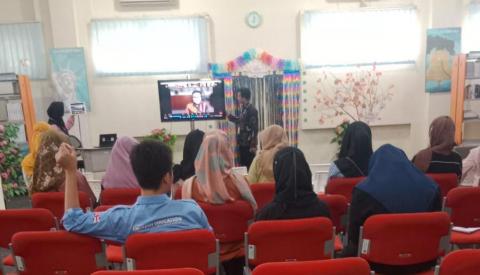My America Jakarta held an International Education Week webinar with the theme "How to Write an Outstanding Admission Essay" online via YouTube streaming and Zoom Meeting which was attended by all American Corners (Amcor) in Indonesia, including Amcor UIN Walisongo Semarang, Tuesday (29/11/2022 )."
This event presented English Language Fellow, Gina Karlin as the speaker. She explained that there are several current trends in graduate admissions in the US, The rise of GRExit provides several provisions that have started since 2016.
1. Optional tests consist of programs have Graduate Management Admission Test (GMAT), Law School Admission Test (LSAT), Graduate Record Administration (GRE)-optional policies and Exams are used as supplemental information
2. No minimum requirements on test scores
3. Some are eliminating standardized tests (e.g., GRE, GMAT, LSAT, etc.)
4. Holistic approaches such as GPA/transcripts, essays, CV/resume, letters of reference, as indicators
"There are current trends in graduate admissions in the US, namely The Rise of GRExit which consist of optional tests, no minimum requirements on test scores, some are eliminating standardized tests, and holistic approach," she explained.
There are several purposes of admissions essay. First is for applicants. Second, for readers/audience.
"We have to know what is the purpose of admissions essay. It is divided into two, for audiences, the purpose is to know themselves, understand for commitment needed and the program, and peel confident.
"For readers or audiences, they want to get a sense of who the applicant is, see that the applicant fits in with the program, see if the applicant can handle stress, and see how the applicant writes," she said.
There are also several considerations according to which university or program will be enrolled, one of which is that if you apply for multiple universities or programs, you need multiple essays as well.
Gina also explained several components of admissions essay for graduate studies, such as:
1. Understanding the task
2. Research the audience
3. Brainstorm
4. Essay approach: chronological and argument structure
5. Structure: introduction, body, and conclusion
6. Paragraph and Language consideration
7. Concrete examples
